With all the information being shared on social media, there are a few cases where bits and pieces of information have been less than accurate.
I’ll be honest with you. I’m not a fan of misinformation.
That’s why it is crucial that we tackle some of the biggest myths in dentistry today.
#1: White teeth is the standard.
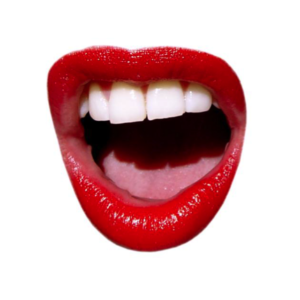
It’s so popular to have super white teeth nowadays. Like those models you see on Instagram.
But the fact is, teeth are yellow. At least not as white as the color of A4 paper, or piano keys.
The dentine layer of the teeth is yellow. Enamel (outer layer) is blueish white or translucent so the yellowish color of the dentine will shine through. The thicker the dentine, the yellower the teeth appear.
Hence, some people just have darker teeth, deal with it. Yellow teeth don’t signal a medical problem. Yellow teeth can be as healthy as white ones. Yellowing is not only a common side-effect of stains from food and beverages (coffee, wine) but also a natural part of the aging process.
Besides, beauty is subjective. It’s all about the perception, complexion and color contrast. Notice how teeth appear whiter on people who wear deep color lipstick or those with darker tone skin? Ah, Darlie toothpaste.
Still, nothing wrong aiming for that Hollywood sparkling smile. If you’re all for it, be aware of the concentration of the bleaching agent. Hydrogen Peroxide is the whitening ingredient in everything. Look for the percentage. The strength of the formula used is what’s different between over-the-counter and prescription from the dentist.
#2: Normal for gums to bleed / Stop flossing if gums bleed
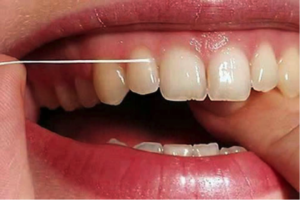
If your gums bleed when you floss, should you stop?
NO.
It’s a sign of sick gums. So keep flossing, and you’ll notice the bleeding gets lesser and lesser until one day it doesn’t bleed at all. Congratulations! You now have healthy gums.
A lot of people believe they don’t need to floss “because food hardly gets stuck between my teeth.” But just because you don’t see it, doesn’t mean it’s not there.
Flossing not only gets rid of dental plaque build-up but it also prevents tartar(calculus) accumulation which is a plaque layer that has bonded itself to your teeth.
I know you hate it. I hate it. Your mom hates it. Floss hates itself. But there is NO replacement that is as effective as floss. If you don’t want to floss, there are many other solutions – water flosser, or the ones with long plastic handle for better grip. The main point here is interdental cleaning. There are also other tools out there, e.g., dental pick or an interdental brush to clean the space in between your teeth.
Do it. If you are susceptible to gum disease or cavities, this will either minimize your chance of cavitiy formationor premature tooth loss. Some people claim they never floss and have never had a cavity) – but your risk factors can change, and you will pay the price.
#3: Fluoride is toxic
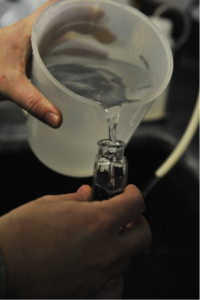
Is the fluoride conspiracy real?
Google “fluoride conspiracy” and be amazed at the number of search results. You can’t help but notice a small group of people freaking out about the issue of fluoride in water, in toothpaste, in all things.
FACT: Fluoride occurs naturally in water though usually not at a high enough level to protect teeth. Therefore water fluoridation is done to adjust fluoride to an optimal level, which is 0.7 mg per liter of water.
The truth is, Fluoride is an example of everyday products fortified to improve our health. Other examples are, iodine added to salt, folic acid added to bread and cereals, and Vitamin D added to milk.
Consider these 3 points:
1) Fluoridated drinking water is considered one of the “10 significant public health achievements of the 20th century.
2) Children who drink fluoridated water have stronger teeth that resist decay better over their lifetime.
3) Evidence shows that for most cities, every $1 invested in fluoridation saves $38 in costs to treat dental problems.
Too much of fluoride can lead to fluorosis though, which appear as discoloration or enamel spots. Nearly all fluorosis are mild. Most occur due to children ingesting toothpaste that affects the teeth development. So parents, make sure your kids don’t swallow that toothpaste.
Taking into account the pros and cons, public health experts around the world have given it a go-to fluoridate water and endorse the use of fluoride in dentifrices (aka toothpaste).
#4: “I don’t have it because there’s no hole in my tooth.”
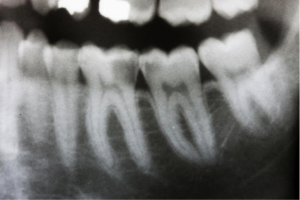
Regardless how good you are taking care of your teeth, 6-month visits to your dentist should be included in your routine.
Why? Because some cavities are under the surface and you can’t see by looking only. We’ll need x-rays to detect them.
Types of caries can’t be (easily) seen by untrained eyes:
1) White spot lesions – localized areas of enamel demineralization, the earliest signs of caries. In such cases, dental professionals might apply Fluoride varnish or another noninvasive manner to remineralize the affected regions. If left unchecked, the caries will become larger and larger and eventually be cavitated – having holes in the teeth.
2) Sub-gingival caries – decay under the gums. Especially beneath old fillings done many years ago.
3) Interdental caries – decay in between the teeth. Those gaps between teeth where food gets stuck are prone to decay.
One of the earliest signs of tooth decay is sensitivity to hot, cold, and sweet. When your tooth is sensitive, it’s your body signaling to you that something is wrong.
As dentists working in government sector, we see many patients requiring teeth extraction as the decay is discovered way too late.
Things in your mouth are as inexpensive as they are ever going to be right now.The longer you wait to take care of a situation, the more it will cost you in pain, time lost from school/work and dollars from your bank account.
#5: Cavities are caused by sugar
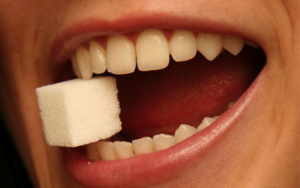
The cause of cavities is acid, not sugar.
But sugar does play a major role and indirectly causing it.
Cavities do not occur because of sugar particles in your mouth. It happens because the bacteria in your mouth produce acids that harm your enamel. When digesting these sugars, bacteria in your mouth produce an acid that combines with saliva to form that nasty stuff your dentist warned you about: plaque.
Plaque starts building up after every meal, and if it isn’t brushed away frequently, it can erode the hard, outer enamel of a tooth, resulting in tiny holes in the tooth surface. These holes mark the initial stage of cavity formation.
Do you know that frequent snacking is ten times worse than taking a big dessert all at once? It is how OFTEN you eat sugary food that matters more than how MUCH you eat.
For example, sipping on soda or acidic drinks throughout the day is worse for your teeth than gulping them down. This has to do with the pH balance in your mouth and how long it is an acidic environment before your saliva buffers it back to normal.
That’s why, sipping on lemon juice throughout the day might be overall good for your body, but you’ll risk eroding your teeth. So do your teeth a favour and drink that lemon juice in moderation, alright?
#6: Avoid dental check-up if you’re pregnant

Increased levels of pregnancy hormones make a woman more susceptible to gum diseases, so a routine checkup is recommended even during pregnancy to screen for abnormalities.
All pregnant women attending government maternity clinics (Klinik Kesihatan Ibu & Anak or KKIA) and hospitals will be given an in-house dental checkup. This oral health programme has been targeted towards antenatal mothers to create awareness.
The safest period for the interceptive dental treatment is from the last period of the first trimester to the first week of the third trimester. The second trimester of pregnancy (week 13 to week 27) is considered safest of all.
“Can I take dental x-ray when I’m pregnant?”
The dose of radiation in dental X-rays is so low there’s virtually no risk to the unborn baby. For your information, in X-rays, the dose of radiation is measured in milligrays (mGy). With most dental X-rays, the dose the unborn baby may receive is up to about 1 mGy, so low that it’s deemed negligible to cause harm.
The American College of Obstetricians and Gynecologists Committee on Health Care for Underserved Women reaffirmed its committee opinion in 2015: “Patients often need reassurance that prevention, diagnosis, and treatment of oral conditions, including dental X-rays (with shielding of the abdomen and thyroid) … [is] safe during pregnancy.”
The important takeaway here is, local anesthetics (LA) and X-rays are okay although they are to be done only when necessary.
#7: “My teeth will become loose after scaling.”
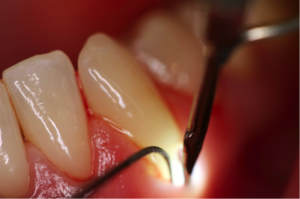
Yes, your teeth might be loose as they heal after scaling. No, scaling is not the culprit.
First off, scaling is indicated when there’s calculus deposition or gum disease. Hence, the gums are already ‘sick’ to begin with.
Some people with poor oral hygiene consider themselves to have healthy, firm teeth, but take one glance and you’ll notice the teeth are covered by a thick wall of calculus! Further questioning and they’ll tell you they’ve never had professional teeth cleaning done in their entire lives.
Thankfully, in Malaysia, the cost of dental care is inexpensive (cheap). Don’t believe me? Look at the dental fees listing at your nearest government dental clinic.
There may be a temporary increase in tooth mobility which is due to the damage already done by dental plaque, but eventually, teeth can get firmer as plaque removal prevents further progress of gum diseases and dental caries.
A deep dental cleaning will stop further damage, and your teeth will eventually start to feel firmer. In fact, in severe gum diseases with the extensive bone loss, the teeth may become so loose that they are only held together by the tartar. So, it’s natural that the calculus removal will increase mobility of the teeth.
Gum disease is one of the leading causes of loose teeth. Gum disease creates pockets of infection between the teeth and gums, and as a result, the gums recede.
Receding gums can cause loose teeth. By performing a deep cleaning, your dentist clears the infection, giving your gums a chance to heal. As the gums improve, they should ‘tighten’ the grip on the loose tooth.
#8: Enamel can be regrown
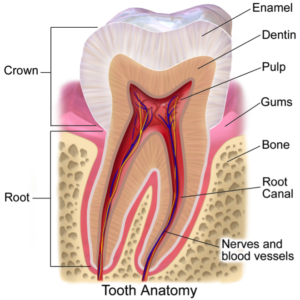
There’s some buzz in the media saying ENAMEL (teeth’s outer layer) CAN BE REGROWN!
The truth is, it’s not happening yet, at least for human teeth.
Meaning that, once the outer layer of the teeth is gone, it’s gone forever. If your enamel is destroyed, your body does not make more to replace it. Unlike other parts of your body – like your bones, for instance – enamel does not contain any living cells, so it cannot regenerate.
Dentine (aka the inner layer) is different. Beneath the enamel is a thicker layer, quite similar to bone, called dentine. This forms the inner core of the tooth and protects the soft tissue or pulp underneath. Dentine is alive with nerves and gives the tooth its sensation. It can regenerate slightly. The dentin-forming cells in the pulp can’t grow outwards, just inwards, which shrinks the pulp chamber. This is a normal response to stress from decay, bruxism (habitual teeth clenching), trauma, and aging.
Since we can’t regrow enamel, for now, prevention is the best cure.
How I wish we could regrow non-living hard tissue already. Perhaps it can lessen or even eliminate pain associated with tooth decay?. But as of now (2018), this technology hasn’t existed yet. Maybe in 10 years’ time, who knows? Let’s keep our fingers crossed.
#9: Colour eyemarks on toothpaste tube mean ingredients
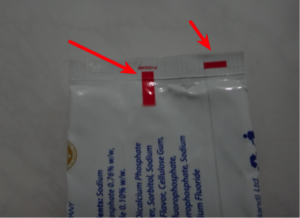
Heard of people saying the small colored strip / square / rectangle on toothpaste indicate their ingredients?
Black means toothpaste is manufactured using Chemicals
Red means toothpaste is manufactured using Chemicals (+) Medicines
Green means toothpaste is manufactured using Natural products (&)
Blue means toothpaste is manufactured using Natural (+) Medicine
Well, it turns out all the above are not true. Simply a myth that has been spread around by someone who knew many may believe it. By the way, those are called “eye marks.”
Eye mark: A printed rectangular mark most often found along the edge of web stock that can be identified by an electric eye. The target defines a point on the web where an individual package is to be cut.
As each pack is supplied on a continuous reel, they would all have the eye mark which eventually creates the tubes for the packaging that we purchase – be it a facial wash, body gel, hand creams, among others.
What’s important to look at when purchasing your toothpaste is its ingredients. For the adults, make sure that it contains fluoride to strengthen your teeth and fight bacteria.
The best way to ascertain the composition of a given brand of toothpaste is by reading the ingredients information printed on the toothpaste box and tube.
#10: Hard-bristles toothbrush clean better / Brushing harder is always better
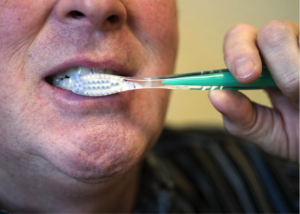
QUIZ: soft-bristles vs. hard-bristles toothbrush; which is better?
If you answer “hard-bristles” and using those, I’m afraid you need to go out right now and get a new toothbrush.
Some people buy the hard brushes on the basis that it can ‘scrape away the plaque much easier’ but that doesn’t justify their prominence. Sadly, they damage their gums by brushing too hard and scraping ‘downward’ on them. Also you might have abrasion cavity, which is due to the neck of the tooth bring scraped off, resulting in hypersensitivity (sharp pain especially on consuming cold drinks).
Two things to know about toothbrushing:
1) Use soft toothbrush (literally labeled “soft”)
2) Brush all teeth surfaces, firmly but never aggressively.
You should pretend you’re polishing a tomato as a judge of how hard to press. If you have no idea how hard to polish a tomato, go marketing with your mum, get a tomato and try. (Okay, you don’t actually need to do it, but you get the point)
Brushing correctly is much more important than how many times you brush a day. So what if you brush thrice a day but sloppily? I’ve seen people who tell me they brush their teeth three times a day (and I believe them) but they still have plaque and calculus on their teeth.
Plaque is soft and can be removed with a toothbrush. When it’s hard – tartar or calculus, you’ll need a professional cleaning, or scaling.
Dr. Edward Tay is a dentist with interest in preventive dentistry and empowering others in oral self-care.
[This article belongs to The Malaysian Medical Gazette. Any republication (online or offline) without written permission from The Malaysian Medical Gazette is prohibited.]
